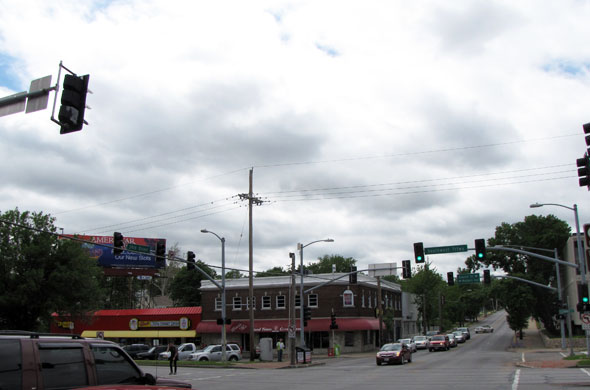
Ever wonder where people get the most red light tickets in Kansas City? Right here in Midtown, at the intersection of 39th Street and Southwest Trafficway.
The city council public safety committee on Wednesday approved renewing a contract for American Traffic Solutions to operate them.
That goes to the full city council today for a final vote.
Councilmembers on the committee said they are continuing with the cameras (at a cost of about $1.6 million a year) because they work.
From 2010 to 2012, citations for running lights declined at all but four of the 29 cameras that cover 17 intersections, police reported.
The overall rate of decline for that period for all cameras was more than 23 percent, said Major James Pruetting.
There was one glaring exception on westbound East 59th Street and the northbound side of US 71 north, where red light citations went up 123 percent.
Pruetting said that was because there are two lights close to each other there and drivers try to blow through them both at once.
But committee chairman John Sharp noted, “On the great bulk of them violations are down and down very significantly.”
Also, he said, drivers learn and change behavior. When the program began, most of those ticketed were Kansas City residents but now most are from out of the city.
Councilman Scott Taylor said “facts speak for themselves” and accidents at the intersections decreased 65 percent their first year and 54 percent their second.
He also said that 86 percent of those ticketed only get one such ticket and only 3 percent get more than two.
The contract allows for the cameras to be moved to other intersections if authorities determine that they are a higher risk.
“As the behavior changes on some of these intersections we may want to move a camera,” Taylor said.
For Midtown residents, a bit of a warning. Police reported last year that the most citations issued are at 39th Street and Southwest Trafficway, with 22,418 or 7,400 per camera there.
Part of that is because the first camera in the system went online there on Jan. 21, 2009.
But people are learning. From 2010 to 2012, citations there declined more than 34 percent.



Who’s talking